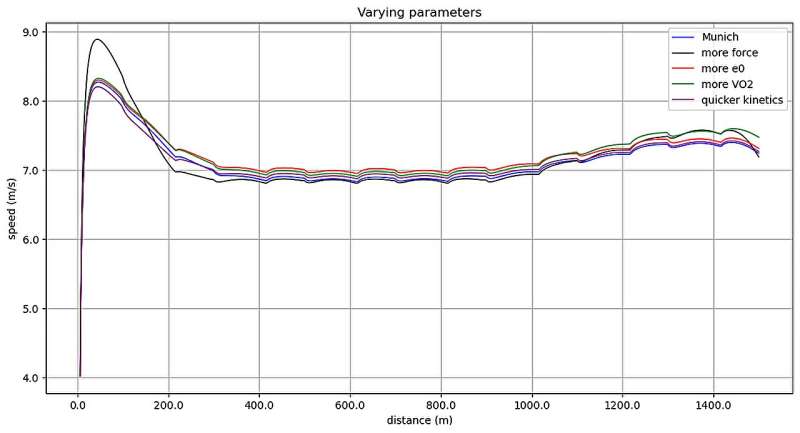This article has been reviewed according to Science X's editorial process and policies. Editors have highlighted the following attributes while ensuring the content's credibility:
fact-checked
trusted source
proofread
Running performance helped by mathematical research

How to optimize running? A new mathematical model has shown, with great precision, the impact that physiological and psychological parameters have on running performance and provides tips for optimized training. The model grew out of research conducted by a French-British team including two CNRS researchers, the results of which appear in the journal Frontiers in Sports and Active Living.
This innovative model was developed thanks to extremely precise data from the performances of Matthew Hudson-Smith (400m), Femke Bol (400m), and Jakob Ingebrigtsen (1500m) at the 2022 European Athletics Championships in Munich, and for Gaia Sabbatini (1500m) at the 2021 European Athletics U23 Championships in Tallinn. It led to an optimal control problem for finishing time, effort, and energy expenditure.
This is the first time that such a model has also considered the variability of motor control, i.e., the role of the brain in the process of producing movement. The simulations allow the researchers to have access to the physiological parameters of the runners—especially oxygen consumption (or VO2), and energy expenditure during the race—as well as compute their variations. Quantifying costs and benefits in the model provides immediate access to the best strategy for achieving the runner's optimal performance.
The study details multiple criteria, such as the importance of a quick start in the first 50 meters (due to the need for fast oxygen kinetics), or reducing the decrease in velocity in a 400m race. The scientists also demonstrated that improving the aerobic metabolism (oxygen uptake) and the ability to maintain VO2 are crucial elements to 1500m race performance.
The development of this model represents considerable progress in studying variations in physiological parameters during championship races, for which in vivo measurements are not possible.
More information: Antoine Le Hyaric et al, Modelling the optimization of world-class 400 m and 1,500 m running performances using high-resolution data, Frontiers in Sports and Active Living (2024). DOI: 10.3389/fspor.2024.1293145





















